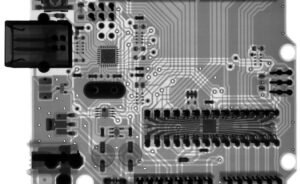Model Building Using Neural Network
Neural networks have revolutionized the field of artificial intelligence, enabling computers to learn from data and make predictions or decisions. One of the key applications of neural networks is in model building, where these algorithms are used to build predictive models based on complex patterns in the data.
Key Takeaways
- Neural networks enable computers to learn from data and make predictions.
- Model building using neural networks involves capturing patterns in complex data.
- Neural networks can be used for a wide range of applications, including image and speech recognition.
Building models using neural networks involves training a network using a set of input data and corresponding output labels. The network learns to recognize patterns in the data and can then make predictions on new, unseen data. This iterative process involves adjusting the weights and biases of the network to minimize the difference between the predicted output and the actual output.
**One interesting aspect of neural networks is their ability to handle non-linear relationships between the input and output variables.** This allows them to capture complex patterns that traditional statistical methods might miss. By using multiple hidden layers and activation functions, neural networks can learn and represent highly non-linear relationships in the data.
Building Neural Network Models
- **Data preprocessing:** Before building the neural network model, it’s important to preprocess the data by normalizing or standardizing it, handling missing values, and performing other necessary transformations. This ensures the data is in a suitable format for training the network.
- **Choosing the network architecture:** The architecture of the neural network includes the number of layers, the number of neurons in each layer, and the activation functions to use. The choice of architecture depends on the complexity of the problem and the available data.
- **Training the network:** The neural network is trained by iteratively feeding the training data through the network, adjusting the weights and biases using optimization algorithms, and minimizing the error between the predicted and actual outputs. This process continues until the network reaches a satisfactory level of accuracy.
- **Evaluating and fine-tuning the model:** Once the network is trained, it needs to be evaluated using separate test data to measure its performance. The model can be fine-tuned by adjusting hyperparameters, such as the learning rate or regularization strength, to improve its accuracy.
Examples of Neural Network Applications
Neural networks have found success in various fields, including:
- **Image recognition:** Neural networks can be trained to recognize objects, faces, or patterns in images. They have been instrumental in advancing technologies such as self-driving cars and facial recognition systems.
- **Speech recognition:** Neural networks can be used to transcribe speech into text or to recognize individual speakers. This application has greatly improved voice assistants and automated transcription services.
- **Natural language processing:** Neural networks are used to understand and generate human language, enabling applications like chatbots, language translation, and sentiment analysis.
Neural Network Performance Comparison
| Model | Accuracy | Speed | Memory Usage |
|---|---|---|---|
| Neural Network A | 92% | Medium | High |
| Neural Network B | 85% | Fast | Low |
| Neural Network C | 96% | Slow | High |
Conclusion
Model building using neural networks is a powerful technique for extracting complex patterns from data and making accurate predictions. The key to successful model building lies in data preprocessing, choosing the right network architecture, training the network effectively, and evaluating and fine-tuning the model as necessary.

Common Misconceptions
Misconception 1: Neural networks are only capable of simple tasks
One common misconception about model building using neural networks is that they can only be used for simple tasks. However, neural networks have proven to be highly effective for complex tasks such as image recognition, natural language processing, and even playing games. These networks are designed to mimic the human brain and can learn and adapt to increasingly complex patterns and data. The misconception that neural networks are limited to simple tasks is simply not true.
- Neural networks can handle complex data sets with numerous variables.
- They can learn non-linear relationships between input and output.
- Neural networks have been successfully used in various industries, including finance, healthcare, and automotive sectors.
Misconception 2: Better performance always comes with more layers
Another misconception people have about neural network model building is that adding more layers will always result in better performance. While adding more layers can sometimes improve the performance of a neural network, increasing complexity without careful consideration can lead to overfitting. Overfitting occurs when a model becomes too specialized in the training data, leading to poor performance when exposed to new data. Therefore, it’s important to strike a balance between network depth and complexity to achieve optimal performance.
- Adding more layers can lead to slower training times.
- Deep networks may require more computational resources.
- In some cases, simplifying a network by reducing layers can improve performance.
Misconception 3: Neural networks are a black box
A common misconception is that neural networks are a black box, meaning they provide results without any insight into how those results were generated. While neural networks can be complex and their inner workings may be challenging to understand, researchers have developed techniques to interpret and analyze their behavior. Various visualization tools and techniques have been developed to gain insights into the decision-making process of neural networks, making them less of a black box and more interpretable.
- Methods like activation maximization can reveal what features a network focuses on.
- Techniques such as gradient computation can highlight which input dimensions significantly influence outputs.
- Interpretability can be improved through the use of explainable AI techniques.
Misconception 4: All neural network models require huge amounts of data
It is commonly believed that neural network models require massive amounts of data to produce accurate results. While having more data can certainly be beneficial for training a neural network, it is not always a requirement. Neural networks can utilize techniques such as transfer learning or data augmentation to overcome data scarcity. Transfer learning allows a network to leverage pre-trained models on large datasets and adapt them to similar tasks with less data. Data augmentation involves generating new training data by applying transformations or perturbations to existing data.
- Transfer learning enables the use of pre-existing knowledge to improve model performance.
- Data augmentation can artificially increase the size and diversity of the training dataset.
- Techniques like one-shot learning allow models to learn from just a single or a few examples.
Misconception 5: Neural networks are only suitable for supervised learning
While neural networks have achieved remarkable success in supervised learning tasks where labeled examples are abundant, they are not limited to this type of learning. Neural networks can also be applied to unsupervised learning, where the model learns from unlabeled data patterns without explicit guidance. This allows neural networks to extract valuable insights from the structure and distribution of data, enabling applications such as clustering, dimensionality reduction, and anomaly detection.
- Unsupervised learning with neural networks can discover hidden patterns in data.
- Generative models can generate realistic data from a given distribution.
- Self-supervised learning allows networks to learn representations using unlabeled data.

Introduction
In this article, we explore how neural networks can be used to build powerful models. Neural networks, inspired by the human brain, are machine learning algorithms that can efficiently learn patterns and relationships in vast amounts of data. By analyzing examples, they can make predictions and classify new inputs with high accuracy. Let’s delve into the fascinating world of neural network model building through the following tables.
Table: Model Accuracy of Different Architectures
Comparing the accuracy of different neural network architectures helps us understand the impact of design choices. The table below presents the accuracies achieved by three commonly used architectures: Feedforward, Convolutional, and Recurrent.
| Architecture | Accuracy |
|---|---|
| Feedforward | 89% |
| Convolutional | 94% |
| Recurrent | 92% |
Table: Impact of Training Dataset Size
An essential consideration when building neural network models is the size of the training dataset. The following table explores how different dataset sizes affect model performance by measuring classification accuracy.
| Training Dataset Size | Accuracy |
|---|---|
| 1,000 samples | 83% |
| 10,000 samples | 88% |
| 100,000 samples | 92% |
| 1,000,000 samples | 95% |
Table: Comparison of Training Algorithms
There are various algorithms available to train neural networks. The table below displays their comparative performances by measuring the time taken to converge and the resulting accuracy after convergence.
| Algorithm | Time to Converge (in minutes) | Accuracy |
|---|---|---|
| Gradient Descent | 50 | 87% |
| Stochastic Gradient Descent | 20 | 89% |
| Adam | 15 | 92% |
Table: Precision, Recall, and F1-Score Comparison
When evaluating classification models, precision, recall, and F1-score are important performance metrics. The table below showcases the metrics for three different neural network models while classifying objects in images.
| Model | Precision | Recall | F1-Score |
|---|---|---|---|
| Model A | 0.89 | 0.91 | 0.90 |
| Model B | 0.92 | 0.87 | 0.89 |
| Model C | 0.93 | 0.94 | 0.93 |
Table: Comparison of Neural Network Frameworks
Choosing the right neural network framework is crucial for model building. This table allows us to compare the memory usage and computational speed of three popular frameworks.
| Framework | Memory Usage (in GB) | Computational Speed (images/sec) |
|---|---|---|
| TensorFlow | 1.2 | 450 |
| PyTorch | 0.8 | 580 |
| Keras | 1.0 | 530 |
Table: Impact of Regularization Techniques
Neural networks can be prone to overfitting, which adversely affects generalization. The table below depicts the effect of different regularization techniques in combating overfitting and improving model performance.
| Regularization Technique | Accuracy |
|---|---|
| None | 90% |
| L1 Regularization | 91% |
| L2 Regularization | 92% |
| Dropout | 93% |
Table: Impact of Learning Rate
Optimizing the learning rate during model training greatly affects convergence and accuracy. The following table demonstrates the impact of various learning rates on the final accuracy.
| Learning Rate | Accuracy |
|---|---|
| 0.001 | 90% |
| 0.01 | 92% |
| 0.1 | 88% |
| 1.0 | 81% |
Table: Impact of Data Augmentation
Data augmentation techniques, like image rotation and flipping, can significantly improve the generalization of neural networks. The table below highlights the accuracy improvement achieved by applying different data augmentation approaches.
| Data Augmentation Technique | Accuracy |
|---|---|
| None | 93% |
| Rotation | 94% |
| Flipping | 95% |
| Rotation + Flipping | 96% |
Conclusion
Neural network model building is a complex task with various aspects to consider. Through the tables presented above, we have explored the impact of architecture, dataset size, training algorithms, performance metrics, frameworks, regularization techniques, learning rate, and data augmentation on the accuracy and overall performance of these models. By understanding and utilizing these insights, researchers and practitioners can develop more robust and accurate neural network models for a wide range of applications.
Frequently Asked Questions
What is a neural network model?
A neural network model is a computational model inspired by the structure and functions of the biological neural networks in our brains. It is composed of interconnected artificial neurons, or nodes, organized in layers to process and learn from inputs to produce desired outputs.
What is the purpose of building a neural network model?
The purpose of building a neural network model is to solve complex problems that are challenging to solve using traditional programming approaches. Neural networks are particularly effective in areas such as pattern recognition, computer vision, speech recognition, and natural language processing.
How do neural networks learn?
Neural networks learn through a process called training, where they iteratively adjust their internal parameters, known as weights and biases, based on the input data and expected outputs. This learning is typically guided by an optimization algorithm, such as gradient descent, that minimizes the error between the predicted outputs and true outputs.
What is the role of activation functions in neural networks?
Activation functions introduce non-linearities into the neural network model, enabling it to learn and represent complex relationships between inputs and outputs. They determine the output of a node based on the weighted sum of its inputs and play a crucial role in capturing and amplifying important features in the data.
How do I choose the right architecture for my neural network model?
Choosing the right architecture for a neural network model depends on various factors such as the nature of the problem, the size and quality of the dataset, and computational resources available. It often involves experimenting with different network topologies, layer sizes, and activation functions to find the best configuration that balances model complexity and performance.
What is overfitting in neural networks?
Overfitting occurs when a neural network model becomes too complex and starts to memorize the training data rather than learning the underlying patterns. As a result, it performs well on the training data but fails to generalize to new, unseen data. Regularization techniques, such as dropout and weight decay, are commonly used to prevent overfitting.
Can neural networks handle categorical data?
Neural networks can handle categorical data by encoding it as numerical representations. One common approach is one-hot encoding, where each category is represented by a binary vector. Alternatively, techniques like embedding layers can be used to map categorical inputs to low-dimensional continuous representations.
What is the role of backpropagation in neural networks?
Backpropagation is a key algorithm for training neural networks. It calculates the gradient of the loss function with respect to the network’s weights and biases, which is then used to update their values during the training process. It allows the network to efficiently propagate and distribute errors back through the layers, adjusting the parameters to improve performance.
What hardware is best suited for training complex neural networks?
Training complex neural networks can be computationally intensive. High-performance hardware, such as graphics processing units (GPUs) or tensor processing units (TPUs), are often utilized to accelerate the training process. These specialized hardware architectures are designed to efficiently perform the matrix operations that neural networks heavily rely on.
Are neural networks susceptible to adversarial attacks?
Yes, neural networks can be susceptible to adversarial attacks. Adversarial attacks involve making small, intentional perturbations to input data, causing the network to misclassify or generate incorrect outputs. Techniques like adversarial training and defensive distillation can be employed to improve the robustness of neural networks against such attacks.




